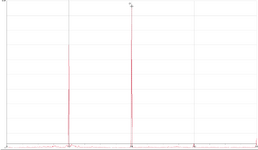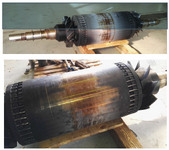Emad Shaaban
Electrical
- Jun 26, 2017
- 14
Hi everybody
A 1800kw electrical motor running with normal temperature and current but with a humming noise.CBM team saying that no vibration has detected because of bearings or a mechanical issue, however the vibration specturm analysis shows frequency of 100hz beside the Ffund 50hz .We are bit sure that the problem is in rotor laminations because a similar motor with the same symposium was deconstructed and found a deformation in it’s lamination..
The question is how can I tell that the problem is rotor with out taking it out of service,we do not have a spectrum for current singular analysis but we are able to generate current instantaneous wave form using the Sepam relay recorder
A 1800kw electrical motor running with normal temperature and current but with a humming noise.CBM team saying that no vibration has detected because of bearings or a mechanical issue, however the vibration specturm analysis shows frequency of 100hz beside the Ffund 50hz .We are bit sure that the problem is in rotor laminations because a similar motor with the same symposium was deconstructed and found a deformation in it’s lamination..
The question is how can I tell that the problem is rotor with out taking it out of service,we do not have a spectrum for current singular analysis but we are able to generate current instantaneous wave form using the Sepam relay recorder



